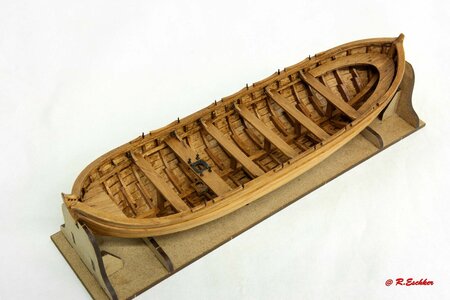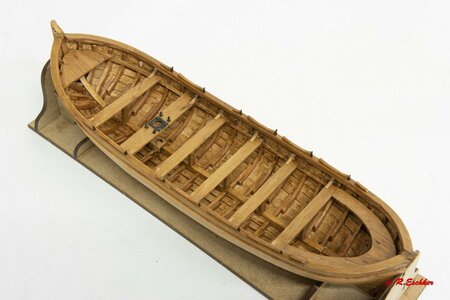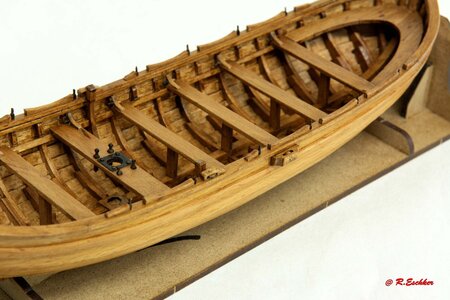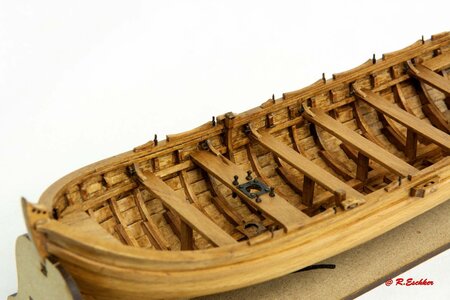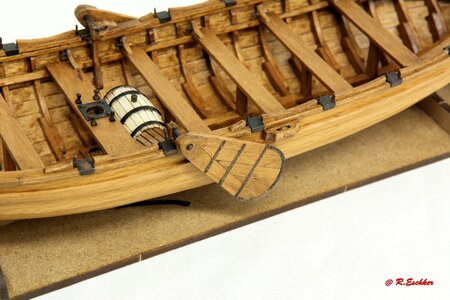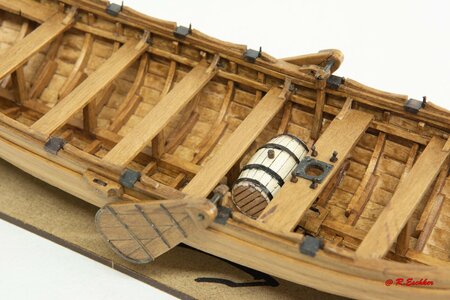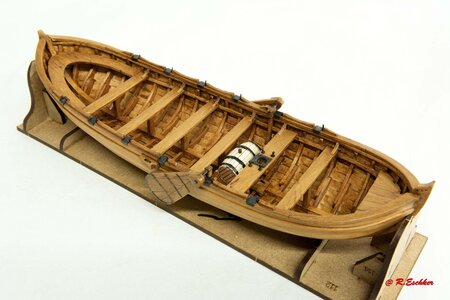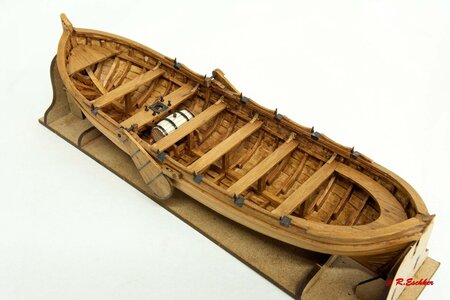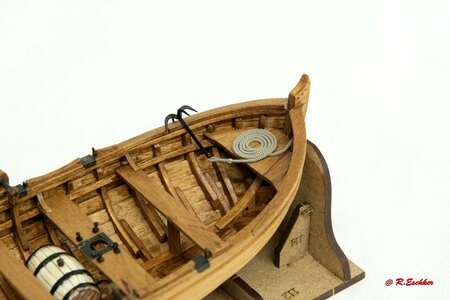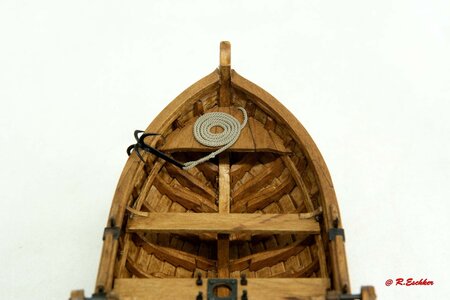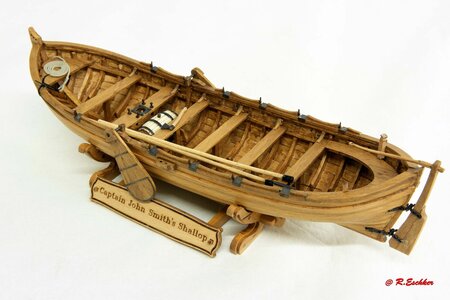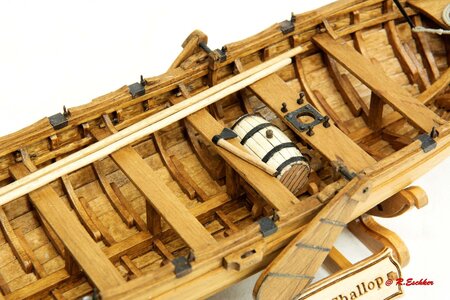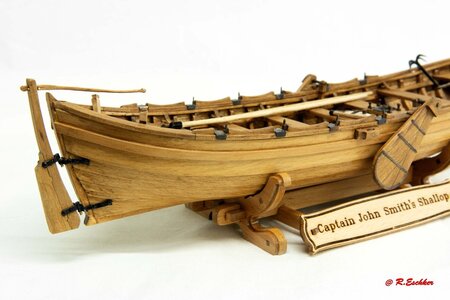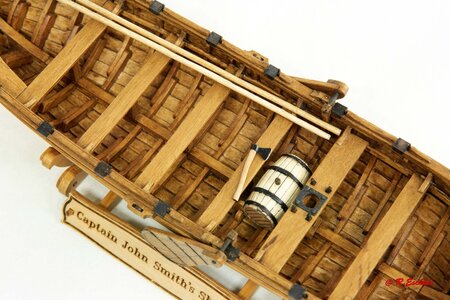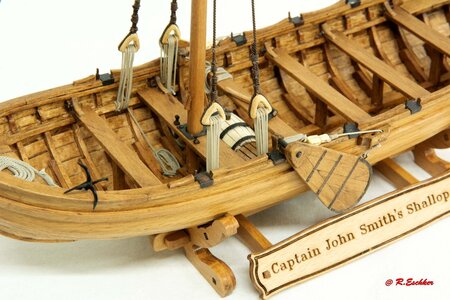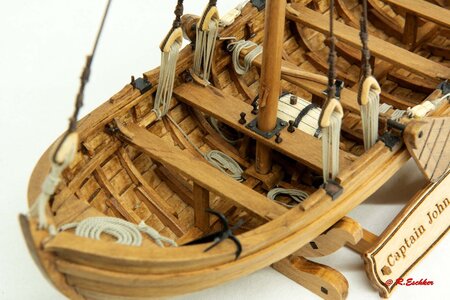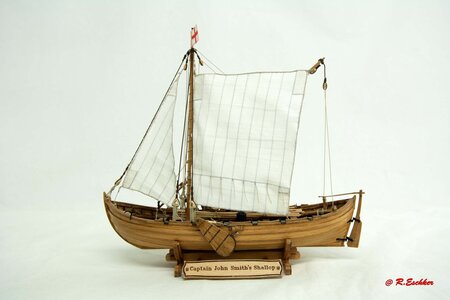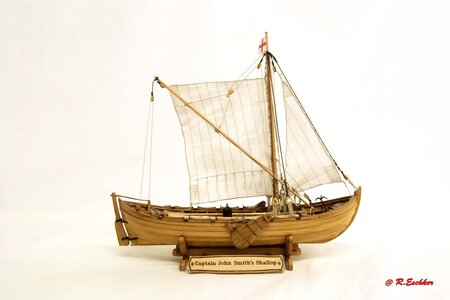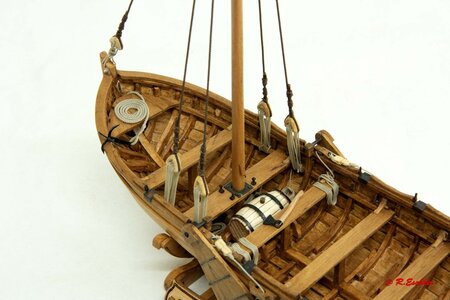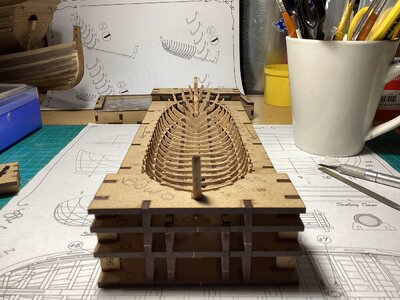Hello Everybody,
When the early colonists came to the New World at the turn of XVI-XVII centuries, they quickly realized a need in a small, universal and durable boats to explore the coast safely and to start trade relations with local North American tribes in this region. One of the most important aspects was not a local boats construction, but assembling of made in Europe beforehand. These boats were disassembled to parts and after shipped to the New World on a big ocean ships which were used by English sailors to cross over the Atlantic Ocean. Usually boats had from 25 to 45 ft length and could move with a sails and with a paddles. Also they had one or two masts and at least one sail, as wells as six-eight paddles and could carry up to 25 persons with a food stocks for a few days. The boats played an important role in survival and development of first settlements in the New World. Here is proposed Captain’s John Smith shallop for assembling. Captain John Smith had attained a team with 14 persons and went to a trip in the summer of 1608th to explore and map out the Chesapeake Bay, and passed more the 1700 miles for 3 months. This story is well known because of meet Captain John Smith and a Native American woman princess Pocahontas during his trip. The legend of Pocahontas and John Smith was highlighted many times in a literature and cinema All the notes and drawings of this journey were described in detail in Captain’s John Smith diaries. Unfortunately he didn’t describe his shallop in details. Probably this shallop was arrived disassembled to The New World by "Susan Constant"
(Text Pavel Nikitin)
The model has the following dimensions length 272 mm, height 350 mm, width 110 mm. These were the dimensions on the packaging. The finished dimensions of me were length 272 mm, height 250 mm and the width was 95 mm (stand) or 82 mm model. The scale is given as 1:32. All parts were made of various wooden boards and the small parts were in a separate box. Beforehand; it all fit together well and was also a bit of fun. There were very good templates and stands for the jack planking. Unfortunately most of the time is spent getting the burnt edges etc clean. There were also 2 Wooden strips (bark timbers) which I replaced myself. I replaced the blocks completely as they disintegrated themselves when cleaned with sandpaper or fine router. The ropes were very good but I also replaced them and cut them myself, because I have made the experience that there is usually too little of it. There are only pictures of the construction report, because I think the pictures say more than the written word (I speak very bad english)
Translated with www.DeepL.com/Translator (free version)
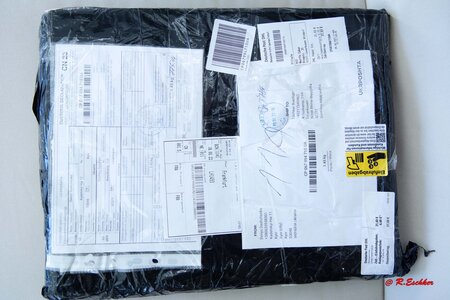
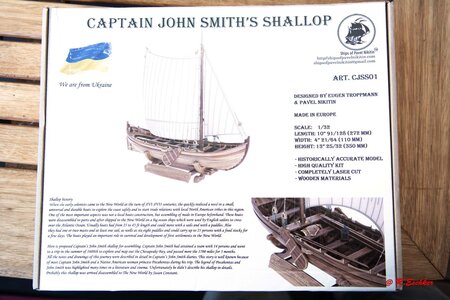
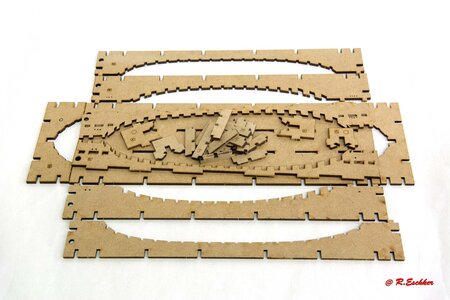
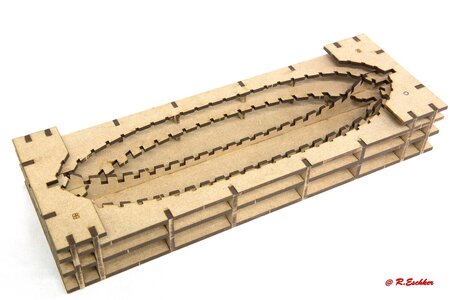
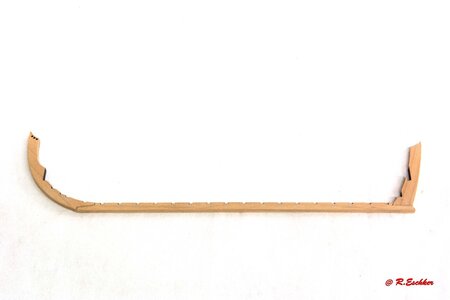
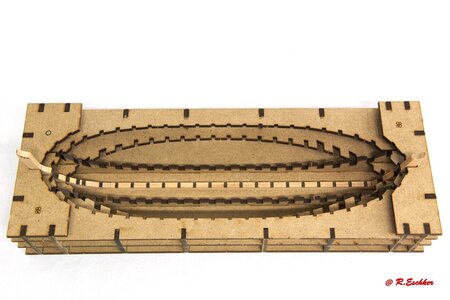
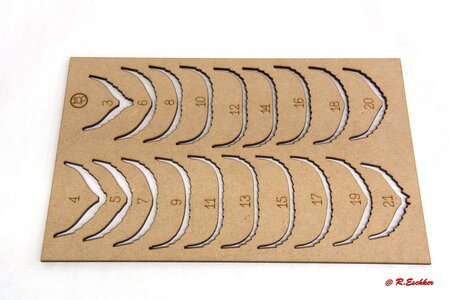
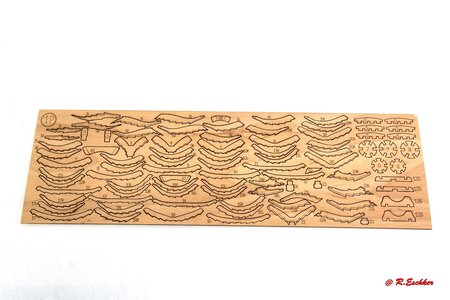
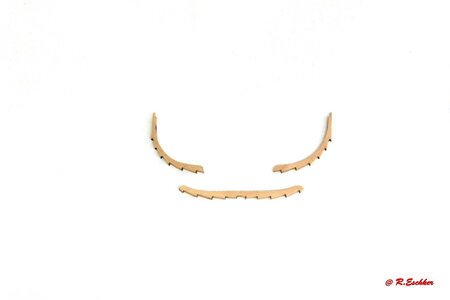
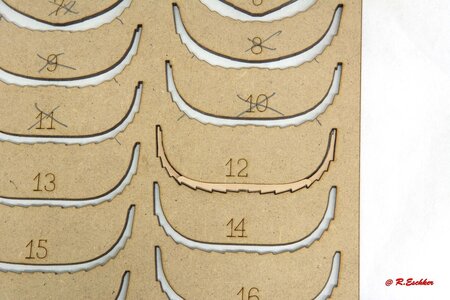
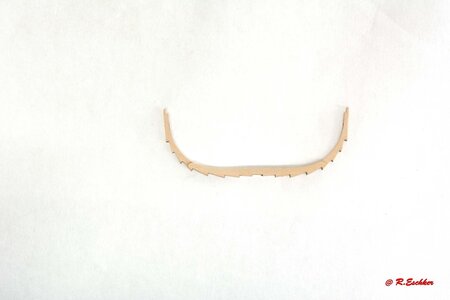
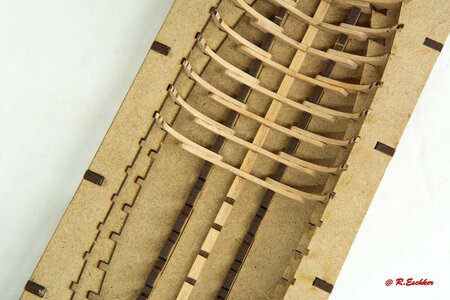
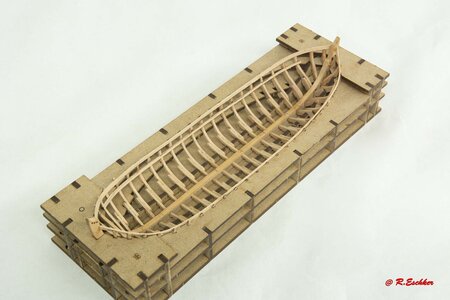
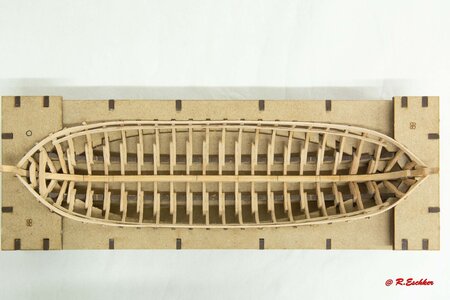
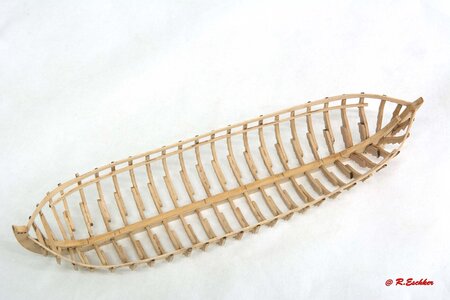
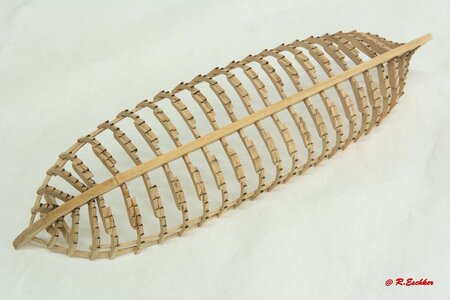
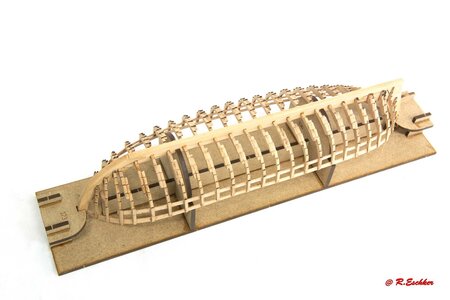
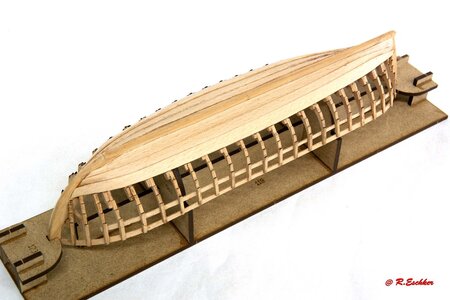
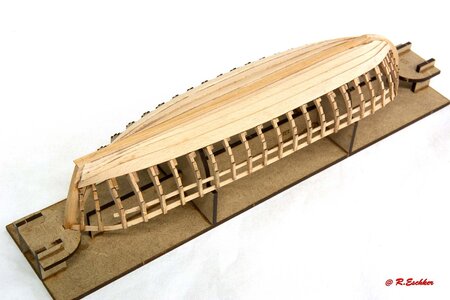
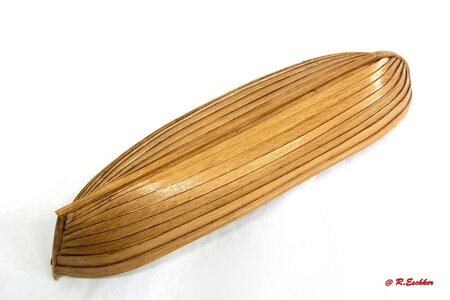
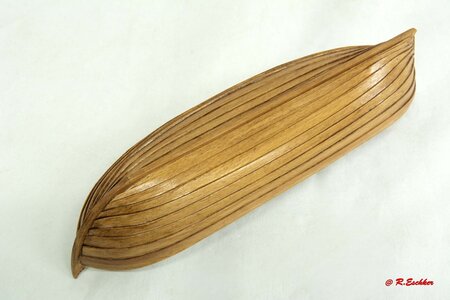
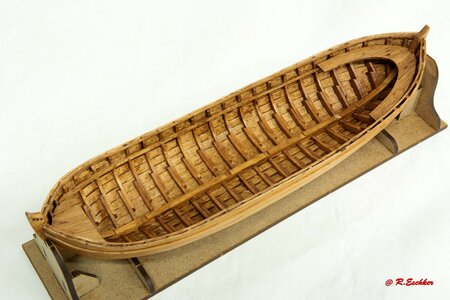
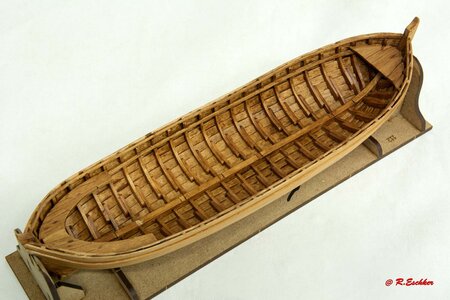
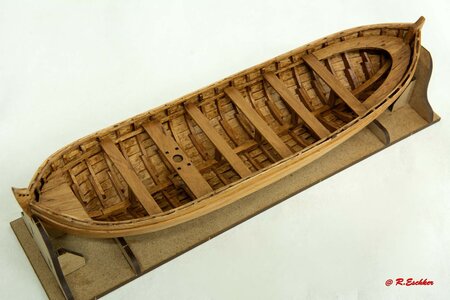
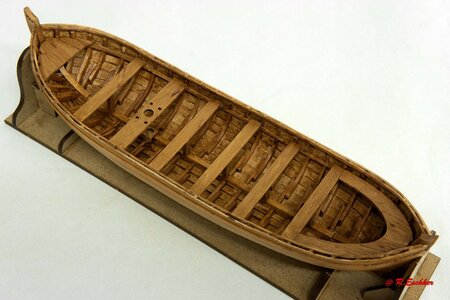
Greetings
Ruediger
When the early colonists came to the New World at the turn of XVI-XVII centuries, they quickly realized a need in a small, universal and durable boats to explore the coast safely and to start trade relations with local North American tribes in this region. One of the most important aspects was not a local boats construction, but assembling of made in Europe beforehand. These boats were disassembled to parts and after shipped to the New World on a big ocean ships which were used by English sailors to cross over the Atlantic Ocean. Usually boats had from 25 to 45 ft length and could move with a sails and with a paddles. Also they had one or two masts and at least one sail, as wells as six-eight paddles and could carry up to 25 persons with a food stocks for a few days. The boats played an important role in survival and development of first settlements in the New World. Here is proposed Captain’s John Smith shallop for assembling. Captain John Smith had attained a team with 14 persons and went to a trip in the summer of 1608th to explore and map out the Chesapeake Bay, and passed more the 1700 miles for 3 months. This story is well known because of meet Captain John Smith and a Native American woman princess Pocahontas during his trip. The legend of Pocahontas and John Smith was highlighted many times in a literature and cinema All the notes and drawings of this journey were described in detail in Captain’s John Smith diaries. Unfortunately he didn’t describe his shallop in details. Probably this shallop was arrived disassembled to The New World by "Susan Constant"
(Text Pavel Nikitin)
The model has the following dimensions length 272 mm, height 350 mm, width 110 mm. These were the dimensions on the packaging. The finished dimensions of me were length 272 mm, height 250 mm and the width was 95 mm (stand) or 82 mm model. The scale is given as 1:32. All parts were made of various wooden boards and the small parts were in a separate box. Beforehand; it all fit together well and was also a bit of fun. There were very good templates and stands for the jack planking. Unfortunately most of the time is spent getting the burnt edges etc clean. There were also 2 Wooden strips (bark timbers) which I replaced myself. I replaced the blocks completely as they disintegrated themselves when cleaned with sandpaper or fine router. The ropes were very good but I also replaced them and cut them myself, because I have made the experience that there is usually too little of it. There are only pictures of the construction report, because I think the pictures say more than the written word (I speak very bad english)
Translated with www.DeepL.com/Translator (free version)

























Greetings
Ruediger


